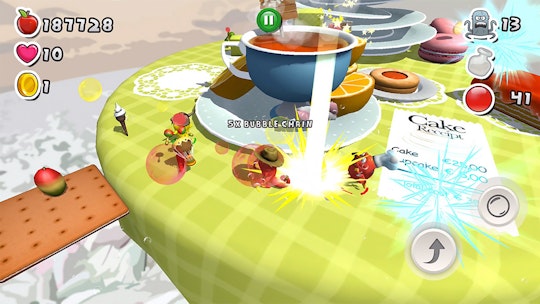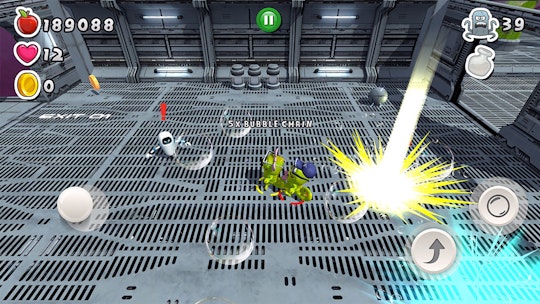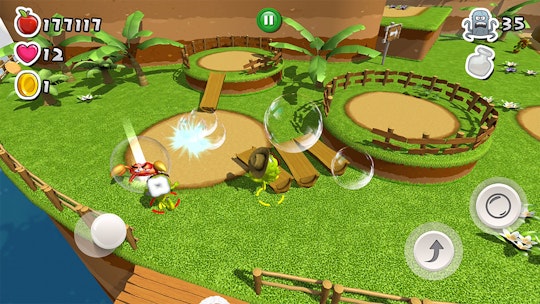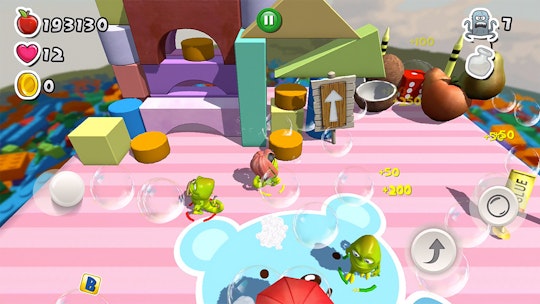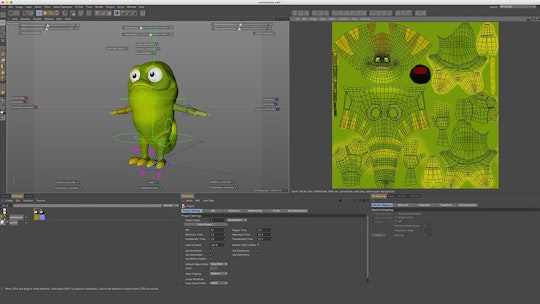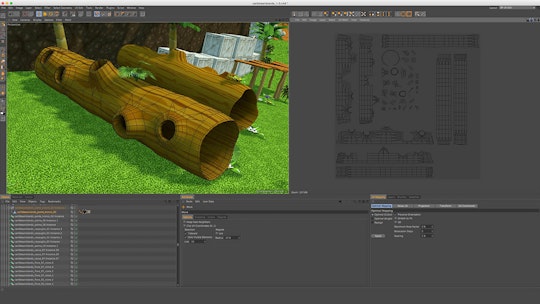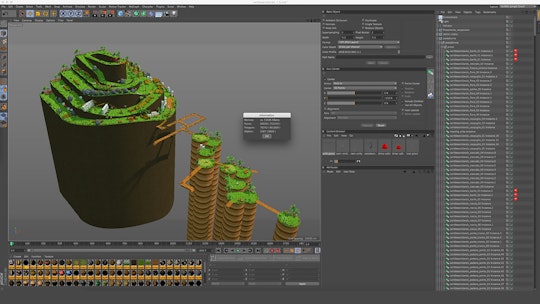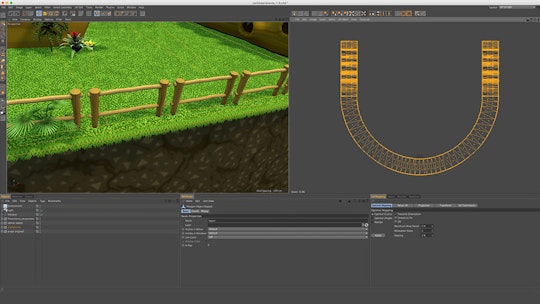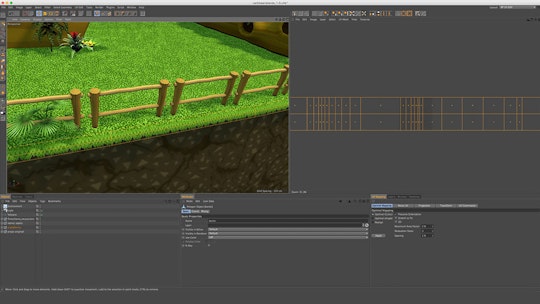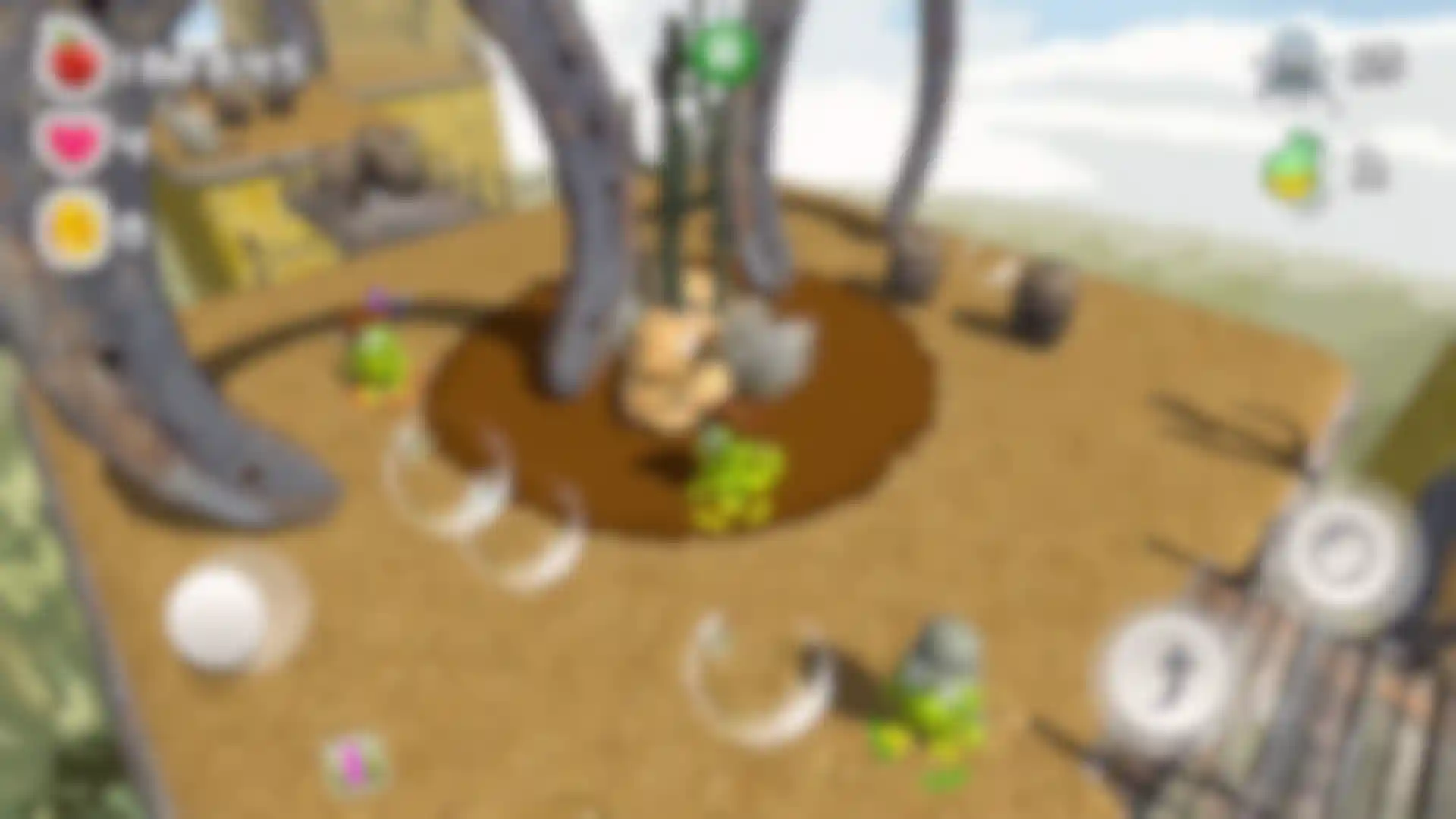
Cinema 4D Jumpstarts Chuck the Chameleon Most games that run on multiple platforms are developed using Unity 3D and creating content for these games can be easily done using Cinema 4D!
What do seasoned gamers with years of 3D experience do when their ideal game is not available in the app store? They create the game themselves, like the 3-person team that created the adventures of Chuck the chameleon, whose mission is to explore 3D levels and gather soap bubbles along the way.
After the initial planning phase, the right tools had to be selected with which to realize the project. The team decided to use Unity 3D as a development tool since it could also be used to develop for Android systems in addition to iOS. Graphic artists Alessandro Maniscalco and Elisa Salgarelli created the 3D elements using Cinema 4D.
Cinema 4D had everything the team needed to create all in-game elements but programmer Matteo Porchedda explained that the devil lies in the details: “The exported elements as such worked well but they were not memory efficient! If multiple instances of a given object were in a scene they would be converted to geometry on export, which in turn dramatically increased their file size. Therefore, I create a tool using Python that converts instances in Unity 3D to Unity Prefabs. In Unity 3D we used a second tool to quickly and easily position the Prefabs, if necessary.”
Cinema 4D gave the artists a wide range of freedom for designing levels, which also posed challenges. As Matteo stated, “Since we were developing for tablet devices with limited performance, many of the levels created by Alessandro and Elisa proved to be too detailed and had to be optimized. Fences (Ital.: steccato) were very memory intensive and many could be removed without affecting the character of the levels too much. After removing many of the fences throughout the game I was eventually given the nickname ‘Mr. Steccato’!”
After the objects had been modeled, texturing and lighting was next on the list, all the while making sure to get the best out of each individual object. This was done using Maxon’s mesh painting tool BodyPaint 3D, which let UVs be unwrapped very quickly. “The UV function Stretch to Fit Borders proved to be an invaluable feature,” remarked Matteo, “that made it possible to create seamless transitions between various textures!” Lighting was done using Global Illumination and shadows were added in Cinema 4D. Light Mapping and Texture Baking were used to generate new texture maps using these scenes, which could be used in Unity 3D. In all, over 2,000 textures were created for Bubble Jungle, of which many, such as Chuck’s and the monster’s, were hand-painted in BodyPaint 3D.
It took about two years to conceive, design, texture, export, implement and test all 59 scenes for the game. Bubble Jungle has now been completed and Chuck the chameleon can be experienced on iOS or Android devices. The makers are also planning on making Bubble Jungle available on other platforms.
